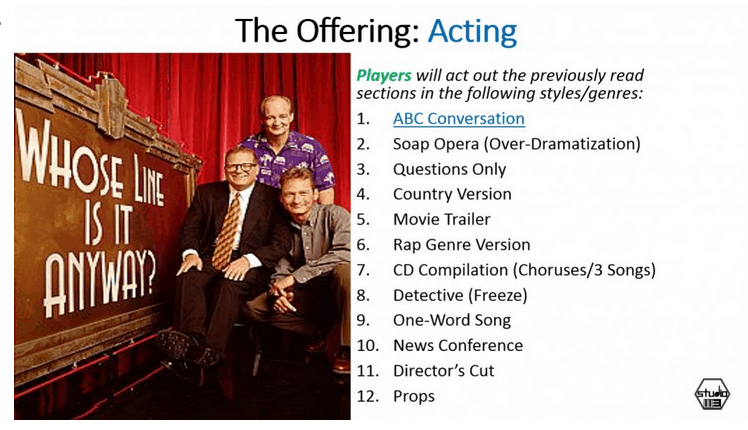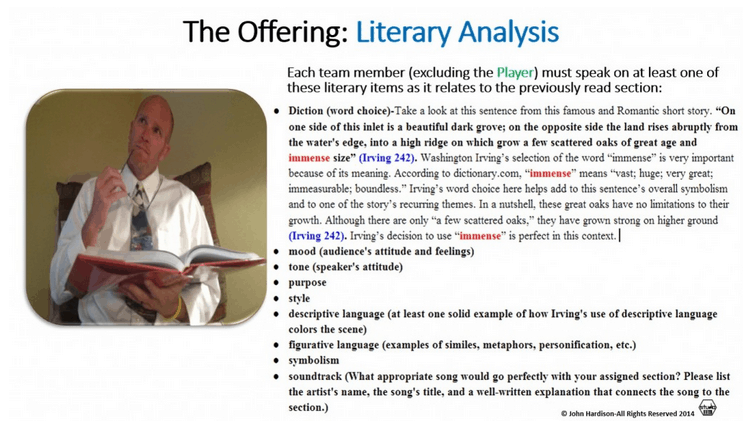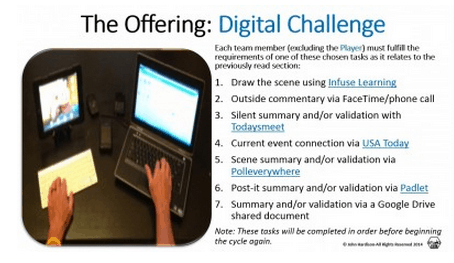The Perimeter, the Players, and the Offering: An Interactive Learning Structure

I can easily remember being a teenager and watching Don Mattingly execute a flawless swing to produce a one-hop double off the right-center field wall in Yankee Stadium or witnessing Magic Johnson pick an opposing player’s pocket just before leading a fast break down court and earning an assist with a no-look, out-of-this-world pass to a teammate. Plays like this always bolted me from my seat and outside as I tried my best to emulate the perfection I just viewed.
This same pattern applied to movies and books. I brought to life whatever I was studying. In fact, my best classes were the active ones. The ones where the entire class came together to enhance the overall understanding of the assigned lessons. Whether the teachers allowed collaboration, projects, or some type of competition to “spice up” the lessons, learning was so much easier with just a little bit of creativity injected into the standards.
I was recently reminded of this truth just after I assigned a collaborative, multi-media project for my American Literature students that will culminate in a shared Widbook e-book that incorporates a literary analysis, a video summary, and a symbolic picture. However, the students quickly informed me that the rigor and complexity of the assigned text would be alleviated with a whole-class, interactive learning structure that guides them through the literature as all students contribute to the overall knowledge.
Well, I agreed. My conversations with the students as I circulated the classroom revealed this truth. I looked over my fifty-plus learning structures to see which one fit best, and I discovered the need for a totally new structure, one that accommodated the literature and standards, the current students, and our classroom.
So, out of necessity, “The Perimeter, the Players, and the Offering” was born.
Here’s a run-down of this new interactive learning structure.
The Guidelines
Note: Teacher will guide teams through a segmented reading of the assigned literature. With each section read, the teacher will stop and give ample time to complete the following guidelines to ultimately enhance the comprehension of the studied literature. Timed rounds are suggested for organization, fairness, and fluidity of the lesson.
- Teams consist of 3 or 4 students.
- Each team designates one member as the actor/actress, also known as the “Player.” This person sits on the inside of the perimeter. The players are available for improvisational acting when selected.
- The remaining team members sit on the outer edge of the perimeter. These students, as well as the designated player, determine whether they will choose acting, literary analysis, or digital challenge as one of their offerings to contribute to the overall understanding of the literature currently studied.
- Each team will select just one offering per round.
- Teams will nonverbally announce their offerings in the following ways: acting-stand as a team, literary analysis-model Rodin’s “The Thinker” statue, digital challenge-hold up illuminated smartphones
- Each of the 3 offerings must be selected before beginning another cycle of selections.
- To begin the interactive structure/gamified lesson, the teacher will initiate “The Perimeter, the Players, and the Offering” by rolling the dice for the first time.
- After the initial round, the team located nearest the last chosen team in a clockwise manner will roll the dice.
- Teams will honor their offerings as it relates to the assigned section of literature. (i.e. If a team is chosen who offered acting, that team’s chosen “Player” will select as many other players to help him/her with the next assignment from the Acting card. However, if a team is chosen who offered a literary analysis, that team will accomplish the next task from the Literary Analysis card.)
- On even rounds, the selected team will perform its duties and then select another team.
The Offering: Option #1
The Offering: Option #2
The Offering: Option #3
This interactive learning structure will hopefully serve as a valuable tool to bring all students and their expertise together as we work through our assigned literature. After an engaging, informative, and creative “reading and working” of this short story, students will definitely have a solid foundation by which they can construct their multi-media project.
Who knows. After such an active, inspiring, and collaborative learning session, maybe the students will jump up from their seats and create their own authentic representation of knowledge.
Update: Check back in two weeks when our students reveal their Widbook e-book study guide.










0 Comments
Leave a Comment
Your email address will not be published. All fields are required.